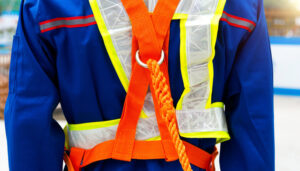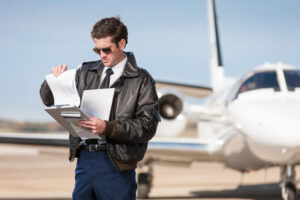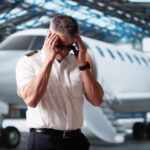The Value of Repetition
Norman Vincent Peale is credited with saying that “repetition of the same thought or physical action develops into habit, which repeated frequently enough becomes an automatic reflex”. In the case of flying, having the correct automatic reflex is crucial. Chair flying is one of the best ways pilots can practice and achieve this. Indeed, it offers an affordable, accessible option to flight practice and can greatly improve individual performance may be great resource in developing crew resource management.
How to Chair Fly
I recall while initially learning to fly how the instructors would consistently emphasize the importance of chair flying. The problem was that I didn’t really understand what chair flying was or how to do it. Looking back on it now, I could have saved myself a lot of headache had I just asked what they meant and sought clarification on how to best fly the chair. The reality is that chair flying is an incredible preflight tool that is oftentimes misunderstood and underutilized.
To start chair flying, pilots should first find a conducive space to practice. Many people find an office like environment to be helpful. Considering chair flying is largely a mental exercise having a quiet area is also beneficial to flight visualization. A cockpit printout may be included in training materials depending upon the program and airframe. If you do not have a cockpit printout many copy and print stores can make them with provided images and specifications. However, the best option is to chair fly in the plane if possible. This provides the exact, rather than just similar, spatial orientation when it comes to muscle memory. The mental aspect of chair flying remains the most critical though. Pilots should go through the flight plan or specific portion step by step and with great care, paying particular attention to detail. By being meticulous and conscious in action pilots will create better habit patterns that will carry over to flying.
Achieving Milestones
The benefit of repetition innate to chair flying is obvious. However, setting and reaching milestones is equally as important. Flight visualization with chair flying allows pilots to set concrete goals that may not be easily achieved through flight time alone. A great example of this is checklist usage and discipline and perhaps some crew resource management techniques. Some checklists may only be referenced once every flight or, in some cases, not even every flight. As you might not see these checklists as often, chair flying them can not only help with familiarity and speed, but also improve accuracy.
For instance, one of the planes I’ve flown has a preflight that averages an hour and a half among experienced crewmembers. When first learning the aircraft, my copilot and I were taking well over 2 hours to complete the preflight. The program required that we demonstrate (by chair flying) a preflight in less than an hour and 45 minutes. The only way to cut down our time was to chair fly until our checklist comfort level improved and process efficiency ensued. After multiple sessions of chair flying, we were able to consistently meet the time requirement and reach that milestone in our training program.
Through repetition, familiarity and confidence grow. While the usefulness of chair flying can’t be fully captured in a single article or experience, undoubtedly, when correctly employed, pilot can recognize the many benefits in CRM, flight visualization, and procedural efficiency.
RELATED READING
RELATED CTS TRAINING










